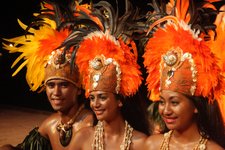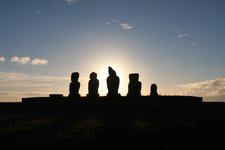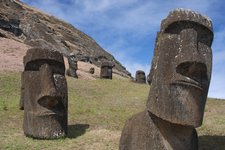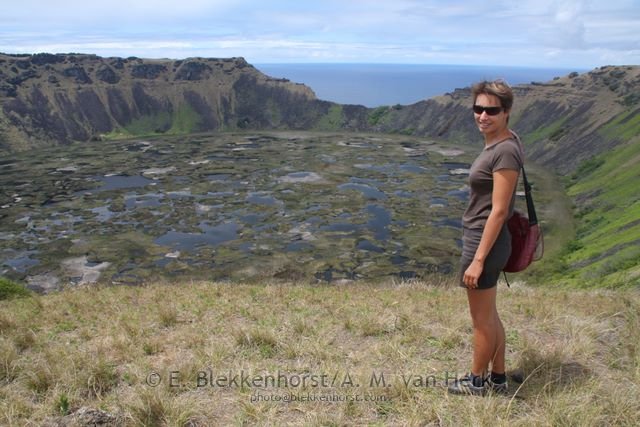What’s in a name? Dutch VOC admiral Jacob Roggeveen arrived on Easter Sunday in 1722 at the tiny remote piece of land in the South Pacific that we now commonly know as Easter Island. In his journal he recorded that lands were neatly cultivated, there were whole tracts of woodland, the population was as large as 12,000 and that all the moai statues were standing upright. The mysterious moai are believed to be symbols of gods and ancestors, carved out of the volcanic rock of one of the craters on the island. Nobody knows for sure how they were transported to the family burial platforms (ahu) where they transmitted mana, or power, to the living family chief. European explorers in the late 18th century however noted that many statues had tumbled, little land was cultivated and no more than a thousand people were left. It is thought that the population had outgrown the island’s resources leading to starvation causing fighting and cannibalism. During the tribal wars, all the moai were toppled, presumably to break the mana of the family they protected. By 1871, after whalers and slave traders caused more suffering by taking slaves and bringing smallpox, only 175 islanders remained…
No, we didn’t see the hammerhead sharks during our last dives on Rangiroa. We’ll have to try again later on the Galapagos Islands where, according to some, “you are guaranteed to see them”. But we did have some more nice dives with more playful dolphins, big sharks, manta and eagle rays and huge schools of barracudas and tunas. One thing we learned (after more than 300 dives you still do!) is that it’s a bit risky to put a dead fish in your pocket before you dive as Nicolas, our dive guide, so elegantly demonstrated; he got attacked by a group of grey reef sharks and only escaped by keeping still and turning himself into a ball, a shape too large for the grey reefs to bite…
Our last day in French Polynesia was a long and tiresome one; we left Rangiroa in the afternoon for Tahiti. There we had until after midnight before our flight to Easter Island. We decided to hang out at the luxurious Intercontinental Hotel in Pape’ete where we had some drinks and a nice dinner which was accompanied by a great island dance show. Having traversed 5 time zones, we’re still a little jet lagged. The sunny weather on Easter Island helps us adjust and the temperature, between 20 and 25 dgrs, is perfect for exploring the island. It is fun to drive (or hike) around the island to find the amazing moai. A lot of them are still toppled, usually face down, but many sites have been restored with the moai neatly upright. Our hostel is near to one of the sites that is favored for its gorgeous sun set views (Tahai). So each time we pass it to go into town for dinner we can watch a spectacular sunset. The time and place apparently is also favorite for weddings as we witnessed yesterday when a couple from Bogotá, Colombia, had their ceremony there in traditional Polynesian style. Another amazing sight on the island, is the quarry at the volcano where the moai were carved out of the rocks. It’s as if time is standing still when you walk among the dozens of moai, some nearly finished and ready to be transported. Apparently some 887 moai were ever made of which nearly 400 are still in the quarry. And nobody knows why..
 |
 |
 |


